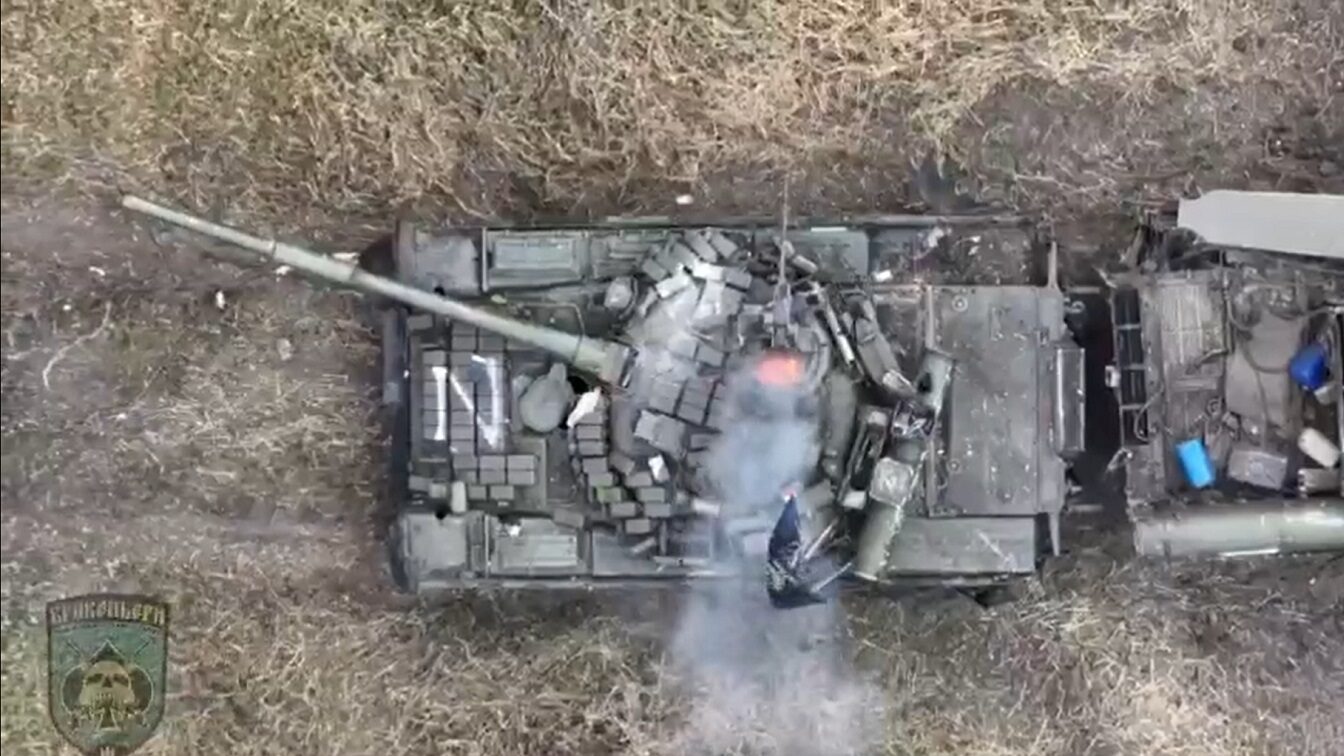The war in Ukraine has become a sort of massive drone war.
Both sides have what seems like limitless ‘kamikaze’ drones that can cause havoc on the battlefield.
What side has the most significant advantage in these weapons? If social media provides a good pulse of where things stand, the advantage seems to go to Ukraine.
Footage: Watch Ukraine Destroy Russian IFV In Donetsk Oblast
A short video clip shared on social media this week shows the moment that Ukrainian forces took out a Russian BMD-4M airborne infantry fighting vehicle (IFV) using a loitering munition somewhere in Donetsk Oblast – aka a ‘kamikaze strike’.
The clip, which is just five seconds long, shows the strike and the immediate aftermath.
Barely a second into the video, the loitering munition – which is a kind of drone designed to explode upon impact – strikes the top of the vehicle.
The strike creates an immediate explosion, which dust and smoke rising into the air and the main hull of the vehicle igniting.
The explosion creates a fire that ravages most of the hull, likely killing anybody on board – if indeed anybody was on board – and severely damaging the vehicle to the point where it may not be recoverable.
Ukraine Weapons Tracker, a popular war-tracking Twitter account that reposts videos shared on Telegram and by Russian and Ukrainian social media accounts, noted that the strike occurred somewhere in Donetsk Oblast.
The account also noted that the strike was conducted by the Ukrainian National Guard.
“The Ukrainian National Guard destroyed a Russian BMD-4M airborne IFV with a loitering munition in #Donetsk Oblast,” the account writes.
The purpose of attacks like this is not only to take out military personnel and destroy vehicles that are already in active use, but also to prevent enemy forces from rescuing abandoned vehicles and repairing or repurposing them. Many videos have emerged online since the outbreak of the war showing both Ukrainian and Russian troops targeting abandoned vehicles and destroying them before they can be recovered again.
In many cases, Ukrainian forces will also work to capture abandoned vehicles and use them in their own defense efforts – however, when the vehicles are simply too far away or difficult to access, it proves more efficient to destroy them using loitering munitions.
What Is the BMD-4M?
The BMD-4M is an infantry fighting vehicle designed to transport airborne troops. The vehicle, first unveiled in 2008, was first deployed by Russian air assault divisions in 2014 but officially adopted by the Russian military in 2016.
An amphibious infantry fighting vehicle, the BMD-4 is a post-soviet vehicle and one of the lightest vehicles of its kind made in Russia. The vehicle is not only designed to transport airborne troops but is also fitted with a Bakhcha-U turret and a low-pressure rifled gun that fires laser-guided anti-tank missiles.
#Ukraine: The Ukrainian National Guard destroyed a Russian BMD-4M airborne IFV with a loitering munition in #Donetsk Oblast. pic.twitter.com/uYIQAcq58s
— ???????? Ukraine Weapons Tracker (@UAWeapons) June 26, 2023
Jack Buckby is 19FortyFive’s Breaking News Editor. He is a British author, counter-extremism researcher, and journalist based in New York. Reporting on the U.K., Europe, and the U.S., he works to analyze and understand left-wing and right-wing radicalization, and reports on Western governments’ approaches to the pressing issues of today. His books and research papers explore these themes and propose pragmatic solutions to our increasingly polarized society.

